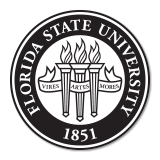Diana Williams
check Recruiting a graduate student for Fall of 2024

Education
University of Pennsylvania, 2003
Research Interests
Neural and hormonal control of food intake and body weight; gut-brain communication; obesity, diabetes, metabolic disorders; physiological and behavioral responses to overfeeding, dieting and starvation.
Current Research
What causes the feelings of hunger and fullness? What makes you decide to stop eating at the end of a meal? Why do so many of us overeat junk food? Why do some people seem naturally thin while others are prone to weight gain and obesity? My laboratory uses rodent models to investigate the diverse factors that control food intake and body weight. Currently, we are focused on how the gut communicates with the brain about nutrients coming into the gastrointestinal tract during meals, and how the brain integrates this information with food palatability, motivation, cues in the environment and learned habits that can promote eating even in the absence of metabolic need.
Lab Description
Rodent models addressing the neural and hormonal control of food intake and body weight; communication between gut and brain; pathophysiology of obesity; physiological and behavioral responses to overfeeding, palatable foods, dieting and starvation.
Maske CB, Jackson CM, Terrill SJ, Eckel LA, Williams DL, Estradiol modulates the anorexic response to central glucagon-like peptide 1, Horm Behav, 2017.
Terrill SJ, Hyde KM, Kay KE, Greene HE, Maske CB, Knierim AE, Davis JF, Williams DL, Ventral tegmental area orexin 1 receptors promote palatable food intake and oppose postingestive negative feedback., Am J Physiol Regul Integr Comp Physio, 2016.
Terrill SJ, Jackson CM, Greene HE, Lilly N, Maske CB, Vallejo S, Williams DL, Role of lateral septum glucagon-like peptide 1 receptors in food intake., Am J Physiol Regul Integr Comp Physiol, 2016.
Williams DL, Neural integration of satiation and food reward: role of GLP-1 and orexin pathways, Physiol Behav, 2014.
Kay K, Parise EM, Lilly N, Williams DL, Hindbrain orexin 1 receptors influence palatable food intake, operant responding for food, and food-conditioned place preference in rats, Psychopharmacology (Berl), 2014.
Mullis K, Kay K, Williams DL, Oxytocin action in the ventral tegmental area affects sucrose intake, Brain Res, 2013.
Dossat AM, Diaz R, Gallo L, Panagos A, Kay K, Williams DL, Nucleus accumbens GLP-1 receptors influence meal size and palatability, Am J Physiol Endocrinol Metab, 2013.
Williams DL, Hyvarinen N, Lilly N, Kay K, Dossat A, Parise E, Torregrossa AM, Maintenance on a high-fat diet impairs the anorexic response to glucagon-like-peptide-1 receptor activation, Physiol Behav, 2011.
Dossat AM, Lilly N, Kay K, Williams DL, Glucagon-like peptide 1 receptors in nucleus accumbens affect food intake, J Neurosci, 2011.
Parise EM, Lilly N, Kay K, Dossat AM, Seth R, Overton JM, Williams DL, Evidence for the role of hindbrain orexin-1 receptors in the control of meal size, Am J Physiol Regul Integr Comp Physiol, 2011.
Undergraduate Research
Explore the Directed Individual Study (DIS) opportunities below or learn more.
